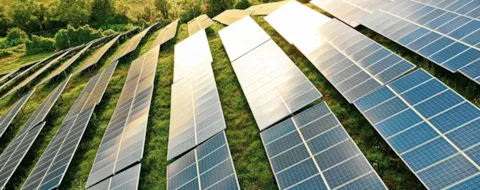Solar+storage assets are not commodity products. Here's how to tell the difference.
As new contracting mechanisms emerge for the transfer of ownership of a renewable power plant, so do new opportunities, risks, and options to optimize your new asset.
As new contracting mechanisms emerge for the transfer of ownership of a renewable power plant, so do new opportunities, risks, and options to optimize your new asset before you even receive the keys to the car. One such contracting variant is the Build Transfer Agreement, whereby the utility negotiates and signs the asset purchase agreements (APA) with the developer, in parallel with the engineering, procurement, and construction (EPC) and operations and maintenance (O&M) contracts. In this variant, typically the developer is responsible for major equipment supply (i.e., PV modules, inverters, main power transformer) and typically signs a “back-to-back” EPC contract for the engineering and construction of the power plant.
The question on all new car buyers’ minds is: how much is this thing going to cost? As utility managers consider how they will build up their renewables portfolios, they may utilize a form of BTA where a “fixed price” is paid for the asset, for the asset, while others employ an “open-book” approach on the EPC budget, in which the buyer and seller agree on a design and technical specifications, and then co-manage the capex/construction budget together, though a Construction Management Agreement (CMA) or Asset Management Agreement (AMA). In this transaction, there are several unique risks that utility buyers might need to be prepared to navigate.
To establish a reasonable price point for the estimate, most car buyers turn to industry publications, publicly available sale data, past experience, and market research; utility buyers of renewable assets rely on much the same. While benchmarking equipment and construction costs against these sources can be useful in the early stages of BTA negotiation, relying solely on them can lead to an over- or under-estimation of the capex required to build a solar plant at a particular site. Without a solid idea of what the project is going to cost the developer to build, it’s hard to negotiate the purchase price from a position of strength.
What we see at DNV is that, just as car manufacturing costs differ by location, actual labor and construction costs for solar PV plants will vary based on site-specific factors such remoteness, complexity of terrain, geotechnical conditions, and availability and cost of qualified labor. For large solar projects breaking ground today, EPC and balance of system costs can represent, roughly, between 55% and 60% of total project costs. With labor headcounts regularly exceeding 500 during the installation of racking and modules, building in a union vs a non-union jurisdiction can impact costs significantly.
Switching gears here, costs will also depend on what, exactly, is being built. Not all equipment is made equal, in terms of quality, reliability, and track record of the supplier. Same goes for designs and construction specifications. If the capex budget is established on the basis of a preliminary design, prior to final equipment selection, and without detailed technical specifications, you may end up with that Datsun, when you thought you were getting a Tesla.
For example, do the PV modules proposed by the developer pose ‘atypical’ risks compared to those generally available in the market? Are the modules consistent in design, technology, and specifications with other established modules? Is the module warranty typical of the industry for the type of module in question? These are all important questions that a utility needs to ask of the Developer when negotiating the BTA and EPC.
On that same note, for the battery energy storage system (BESS), the selection of the right technology plays an important role in having a storage system that’s fit for its use cases. How the system is sized, and what are the degradation and loss assumption been calculation in the total throughput of the energy system will ensure that your BESS will perform and last for the duration of the project life. And similar to a module warranty, understanding the cell warranty and its operational conditions compared to the intended dispatch profile of the battery system, mitigates risks in warranty being voids and dispute issues with cell suppliers.
DNV’s technical specification document we recommend including in the EPC contract being negotiated with the developer. It’s an approximately 200-page document detailing functional requirements up to and including the substation. On the same token, DNV also recommends including the BESS technical specifications to the EPC contract. The specification document includes design details for the install and commissioning of a stand-alone storage system or coupled with solar (AC or DC coupled systems).
In addition, DNV recommends including a list of approved vendors in the BTA or EPC, as well as a requirement for the utility owner to approve any changes in equipment selection and design during the engineering phase. This, coupled with an optimized 30% design as an appendix to the EPC contract, helps ensure you get the Tesla that you’re paying for.
4/6/2021 5:00:00 PM
